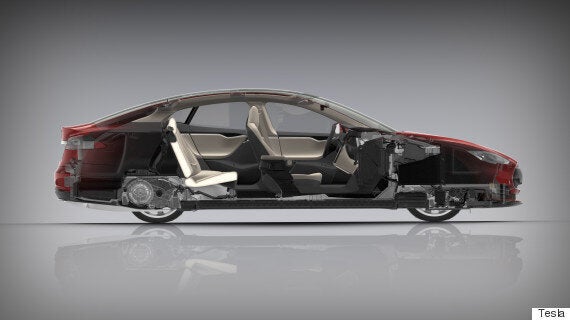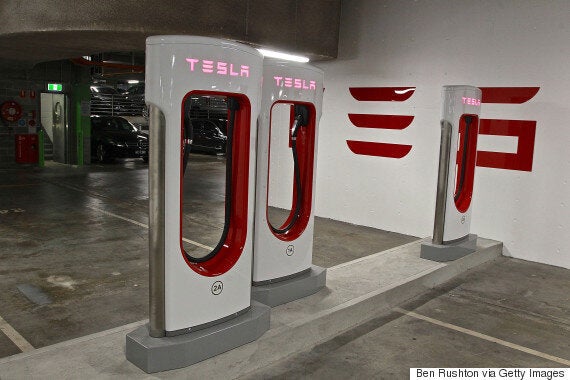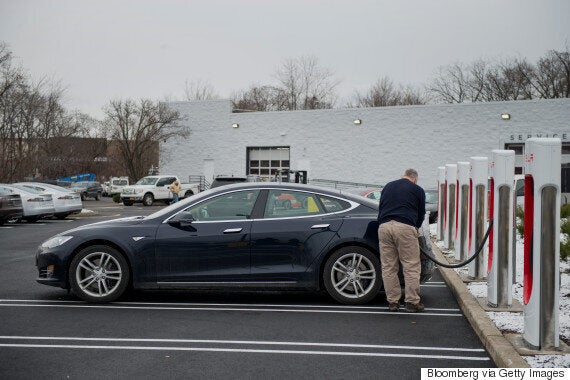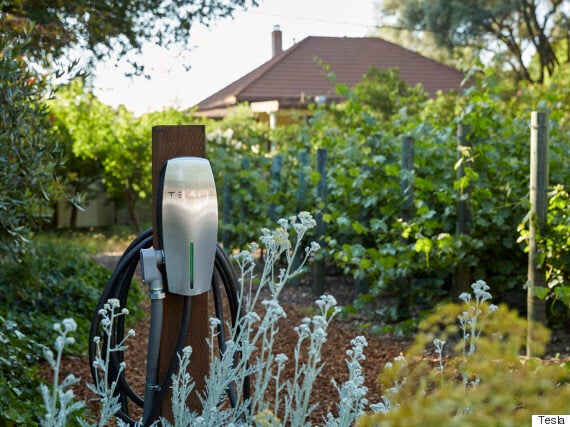So this is it, the electric age has finally begun and leading the charge is everyone's favourite billionaire entrepreneur Elon Musk along with the newly unveiled affordable Model 3 electric car.

Tesla's new 'affordable' Model 3 will cost around $27,500 and has a range of 215-miles
But neither Elon Musk, nor Tesla's brand-new car are the examples that you should use as proof that this statement is correct.
Tesla has already proven that electric cars can exist in a way that's both equal if not better than their fossil fuelled counterparts.
The reason we're not all rushing out to buy one though is the simple problem that's plaguing the entire technology industry: Batteries.

The entire floor of the Model S is one giant battery compartment.
Modern day batteries are a really, really poor way of storing energy. It's why we always moan about our iPhones running out and it's why Tesla's Model S needs charging after travelling half the distance of your average petrol car.
So what's changed if it's not this new car? One word: Supercharger.
These are the Sci-Fi-looking docking stations that Tesla has been slowly but surely rolling out across the world. They're free to use and have the ability to charge a Tesla car almost four times faster than you would be able to at home.

The Supercharger network is key to Tesla making electric cars a success.
They are the electric equivalent of petrol stations and just like petrol stations they are utterly essential to selling the dream of an electric car.
Tesla's Supercharger has the ability to fully replenish the 240-mile range of the Model S in around 70 minutes or if you're in a rush it can give you 80% in just 30mins.
Sure that's not the five minutes it takes to fill a car with petrol but hear me out: You're doing a long drive up to Scotland (about 410 miles), you stop for a cup of coffee and plug your car in, half an hour later you get back to the car and it's ready to go.

You can charge a Model S to 80 per cent in less than 30mins.
30 minutes really isn't that much of an inconvenience when the simple fact is you would be stopping for that long anyway.
Until now however, that coffee break has had to be meticulously planned because there simply aren't enough Superchargers around.
This is where Tesla's master stroke kicks in, the company is planning to effectively double the amount of Superchargers by 2017 bringing the grand-total to over 7,000.
If that wasn't enough Tesla is also looking to massively increase the number of 'Destination Chargers' (slightly slower overnight chargers at car parks, hotels etc) to over 15,000 by 2017.

Destination chargers will need to become the staple in car parks and hotels.
That's a massive commitment and it's one that respects the huge responsibility that Tesla has placed on itself.
It has sold the electric dream to over 130,000 people for a car that hasn't even come out yet. If they want to stand a chance of keeping those owners then they need to make sure that range anxiety is now a thing of the past.
I've had just a taster of what this future looks like with the Model S, and underneath its flashy, self-driving exterior beats a core ecosystem of cars and charging stations that can finally make my electric car dream come true.
